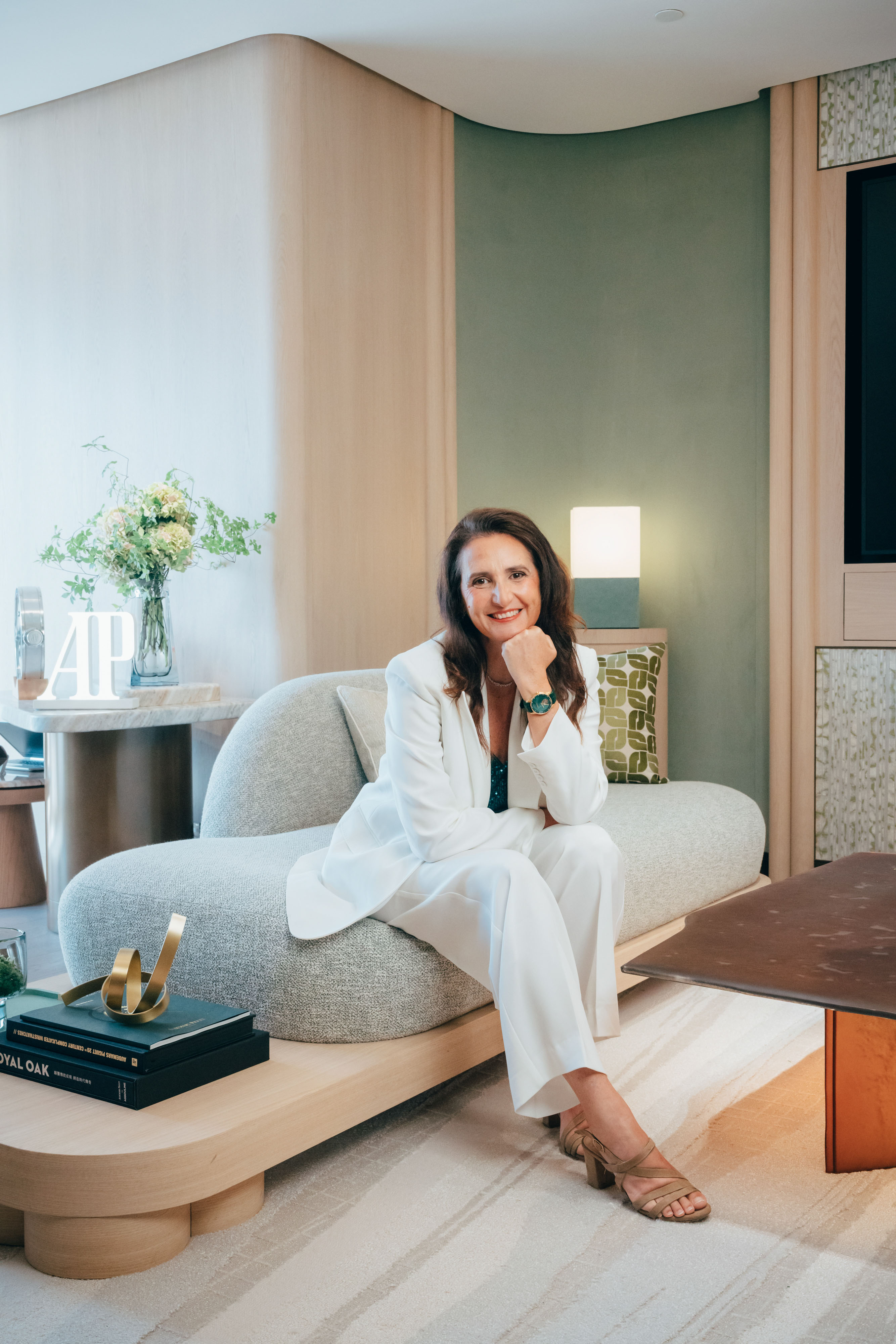Tells us how savvy creative partnerships turned a useful commodity into ethereal decorative art

Tells us how savvy creative partnerships turned a useful commodity into ethereal decorative art
Tells us how savvy creative partnerships turned a useful commodity into ethereal decorative art.
They have graced the world’s finest palaces, mansions and cathedrals as well as the humblest of courtyards and bathrooms. From ancient times onward, mosaic tiles have straddled two opposing worlds: that of the extraordinary and that of the utterly ubiquitous. But one thing has remained constant over the many millennia they have been around.
The alchemists responsible for transforming these plates of glass, clay and stone into enviable objects of luxury were the artists who arranged them into delightful and daring patterns – not the craftsmen who fabricated them. Until, that is, Rossella Bisazza and her brother Piero had a vision for their family business ten years ago.
Thanks to savvy alliances with an impressive roster of fine artists, architects, industrial and fashion designers, the pair have made their tiles into something far grander and more valuable than the intrinsic materials or techniques used to create them.
“ Mosaic tiles still have the charm of their noble and ancient origins ”
The result of Rossella Bisazza’s carefully nurtured creative partnerships and her zest for an artful brand communication style was that Bisazza Mosaico, an Italian firm born out of ashes of the post-war construction industry, was reborn as a bona fide luxury brand five decades later.
“Mosaic tiles still have the charm of their noble and ancient origins,” says the ageless heiress, who before being appointed head of communications at her father’s firm spent much of her life mingling with the great and good of the Italian theatre and opera scene as a ballerina at La Scala.
“But thanks to our designers’ vision and contributions, Bisazza mosaics have become a desirable luxury product for high-end decoration suitable for all living environments rather than just a ‘useful commodity’ – the kind traditionally associated with bathroom and wellness environments.”

Gold & glass mosaics by Bisazza for the Casa Son Vida, a luxury villa in Palma de Mallorca, Spain; interior design by Marcel Wanders (photo by Andrea Resmini)

Patterned bathroom mosaics by Bisazza for the Casa Son Vida, a luxury villa in Palma de Mallorca, Spain; interior design by Marcel Wanders (photo by Andrea Resmini)
Over the years, Bisazza tiles have been used to create countless public outdoor art installations and architectural spaces in venerable institutions like the Sydney Opera House and the Fondation Cartier pour l’Art Contemporain in Paris as well as interiors for Michelin star restaurants, celebrity mansions and pools and some of the best hotels and spas around the world.
Marcel Wanders, Michael Graves, Andrée Putman, Aldo Cibic, Sandro Chia, Michael Graves, Ettore Sottsass, Jaime Hayon and Tord Boontje are just a few of the star designers and architects with whom Bisazza has collaborated on such spectacular show pieces. Their mosaics in turn not only add value to the brand name but also lure in lucrative residential contracts from luxury clients and lesser-known interior designers and architects.
“ We always give carte blanche to the designers ”
“First under the artistic direction of Alessandro Mendini and then Fabio Novembre, Bisazza became very well known and immersed itself into the wider world of design,” she says. “Mendini widened the color palette of our collections and revealed the decorative potential of our products. Fabio Novembre used it as a skin, covering volumes and curved surfaces in a new tri-dimensional interpretation of mosaics.”
“We always give carte blanche to the designers, allowing them to interpret our product. The result of these collaborations is a wide collection of patterns, furniture accessories, installations and works of art that express the unique creativity of each designer – and a distinctive Bisazza style.”

Bisazza Alte Ingresso 1 (photo by Alberto Ferrero)

W Hotel, Hong Kong, mosaic design by Fabio Ongarato (photo by Marc Gerritsen)
Bisazza says that 70% of the company’s sales are from residential clients while 30% are generated by commercial projects with designers and architects like Marcel Wanders’s Lute Suites in Amsterdam or Patricia Urquiola’s Mandarin Hotel Spa in Barcelona.
“The value of prestigious projects like these is twofold: certainly they are our best publicity engine because of their visibility but, at the same time, they are profitable [of their own accord] from a commercial point of view.”
The brand has invested heavily in more than a dozen lavish showrooms (what Bisazza calls ‘flagship stores’, borrowing the language of luxury fashion brands) in many major European and American cities and in Tokyo. Next on the agenda is Doha, Qatar and then a big push into Brazil and India.
“Our biggest selling markets are Italy, France, the United States, Russia and the United Arab Emirates,” she says. “But Bisazza collections are available worldwide with the same patterns. Of course, we’ve outlined some trends in response to the preferences of our clients. In general though, mosaics are well appreciated in those countries where wallpaper decoration is more common.”
Bisazza seems aware that the next logical step for the brand is to push the boundaries of the material itself. The novelty of ‘soft mosaic’ furnishings and Swarovski crystals embedded in the latest collection of tiles was a stepping stone toward this goal.
Along with the aesthetic value of the collection, which of course is a given, “technical research and product innovation are our number one commitment [right now],” she affirms.
No wonder that the world of interiors is buzzing about what Bisazza and her creative cohorts will dream up next.

Glass agglomerate tiles decoration, Codex Ghiaccio and Metron Ossidiana collections.










